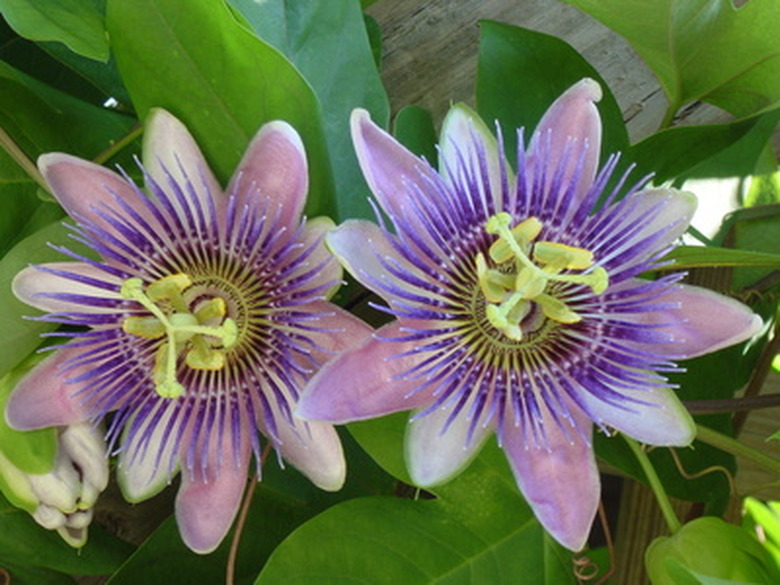How To Grow A Passion Flower In Florida
Things Needed
- Trellis
- Fence
- Wall
- Shovel
- Compost
- Manure
- Water
- Fertilizer
- Pruning shears
Passion flower (Passiflora) is a tropical vine native to South America and well adapted to growing in Florida's subtropical and tropical climate. Three fruiting varieties grow in Florida: Passiflora edulis, Passiflora edulis Flavicarpa and Passiflora quadrangularis. Some say the flower of the passion vine represents the Crucifixion of Christ. This hardy, perennial vine is a vigorous grower reaching heights of up to 20 feet. Frost sensitive, the purple passion fruit (Passiflora edulis) is the only edible variety that will tolerate some frost in winter without dying.
Step 1
Select an area in your landscape that drains well and is located in full to partial sun. Passion flower is well suited for growing in Florida's sandy soil and will bloom best and have the best fruit production if the vine receives some sunlight throughout the day.
- Passion flower (Passiflora) is a tropical vine native to South America and well adapted to growing in Florida's subtropical and tropical climate.
Step 2
Choose an area to plant passion flower where there is a trellis, fence, wall or other object for the vine to crawl on. Keep in mind that this is an aggressive grower so do not plant in an area where the vine can take over–such as next to your house or near power lines.
Step 3
Plant the passion flower vine in early spring when all chances of cold weather have left your region in Florida. Amend the planting site with compost or manure, working it into the soil to a depth of approximately 6 inches. Though passion flower vine grows well in Florida's sandy soil, the addition of organic material will benefit growth and bloom production.
Step 4
Dig a hole approximately two to three times larger than the passion flower vine's root ball. Situate the hole approximately 1 foot from the object the vine will crawl on. Water the planning hole.
- Choose an area to plant passion flower where there is a trellis, fence, wall or other object for the vine to crawl on.
- Though passion flower vine grows well in Florida's sandy soil, the addition of organic material will benefit growth and bloom production.
Step 5
Remove the passion flower vine from the container and inspect the roots. If growing in a circular direction, make two to three vertical slits in the root ball so the roots will begin growing in a straight direction.
Step 6
Place the vine in the planting hole and fill halfway with soil, planting no deeper than it was growing in the container. Firm up the area by stepping on the soil and then continue filling the hole entirely with soil, firming up once again.
Step 7
Water the passion flower vine, thoroughly saturating the roots. Relatively drought tolerant once established, passion flower vines benefit from weekly watering, especially during Florida's long, hot summers.
Step 8
Fertilize passion flower starting with an early spring application before the vine starts its spring growth. Use a 6-6-6 all-purpose fertilize, spreading in a circle around the base of the plant. Continue fertilizing the vine in four equal applications throughout the growing season of spring through early fall.
- Remove the passion flower vine from the container and inspect the roots.
- Use a 6-6-6 all-purpose fertilize, spreading in a circle around the base of the plant.
Tip
Prune to remove dead and damaged wood or to control the vine's size in late winter. Pests are usually not a problem with passion flower vines. The zebra longwing and gulf fritillary butterflies use the vine as a larval food.
